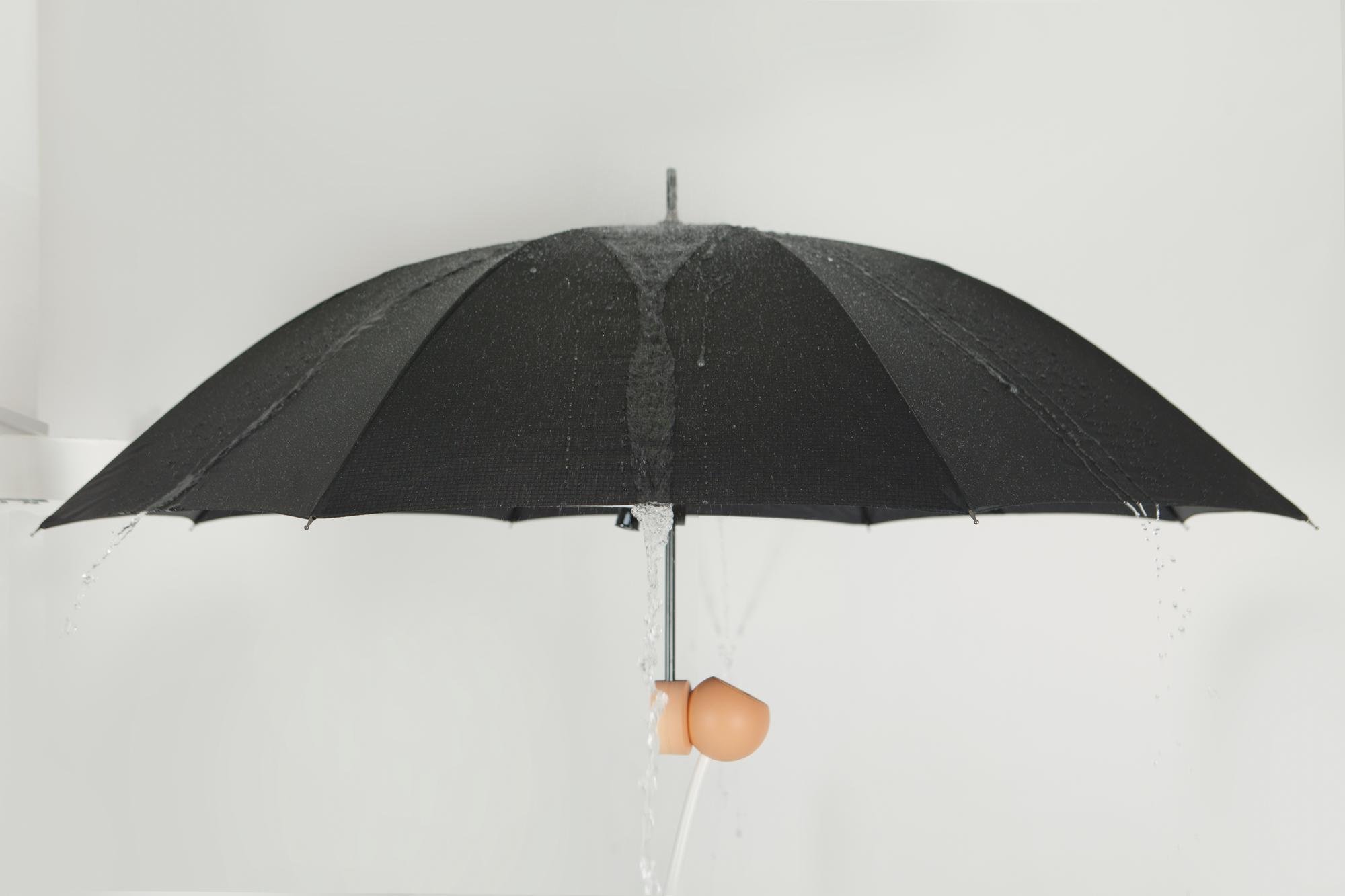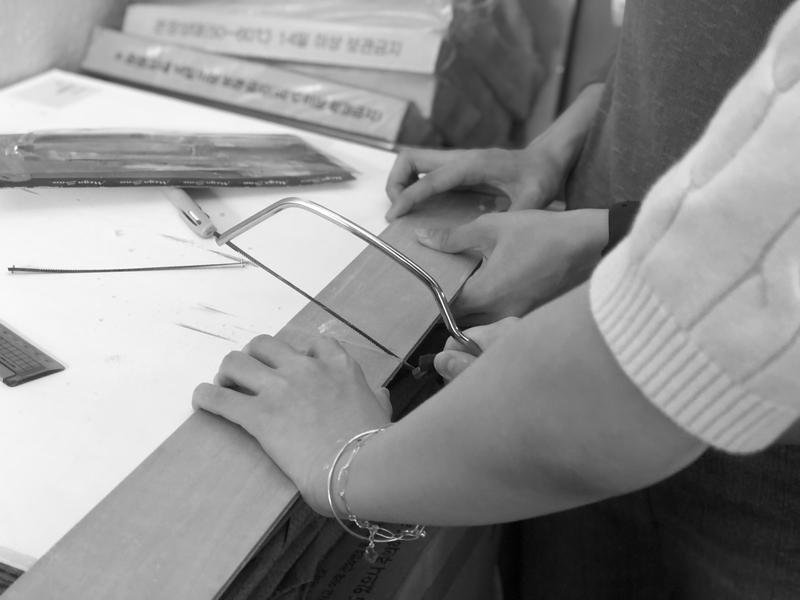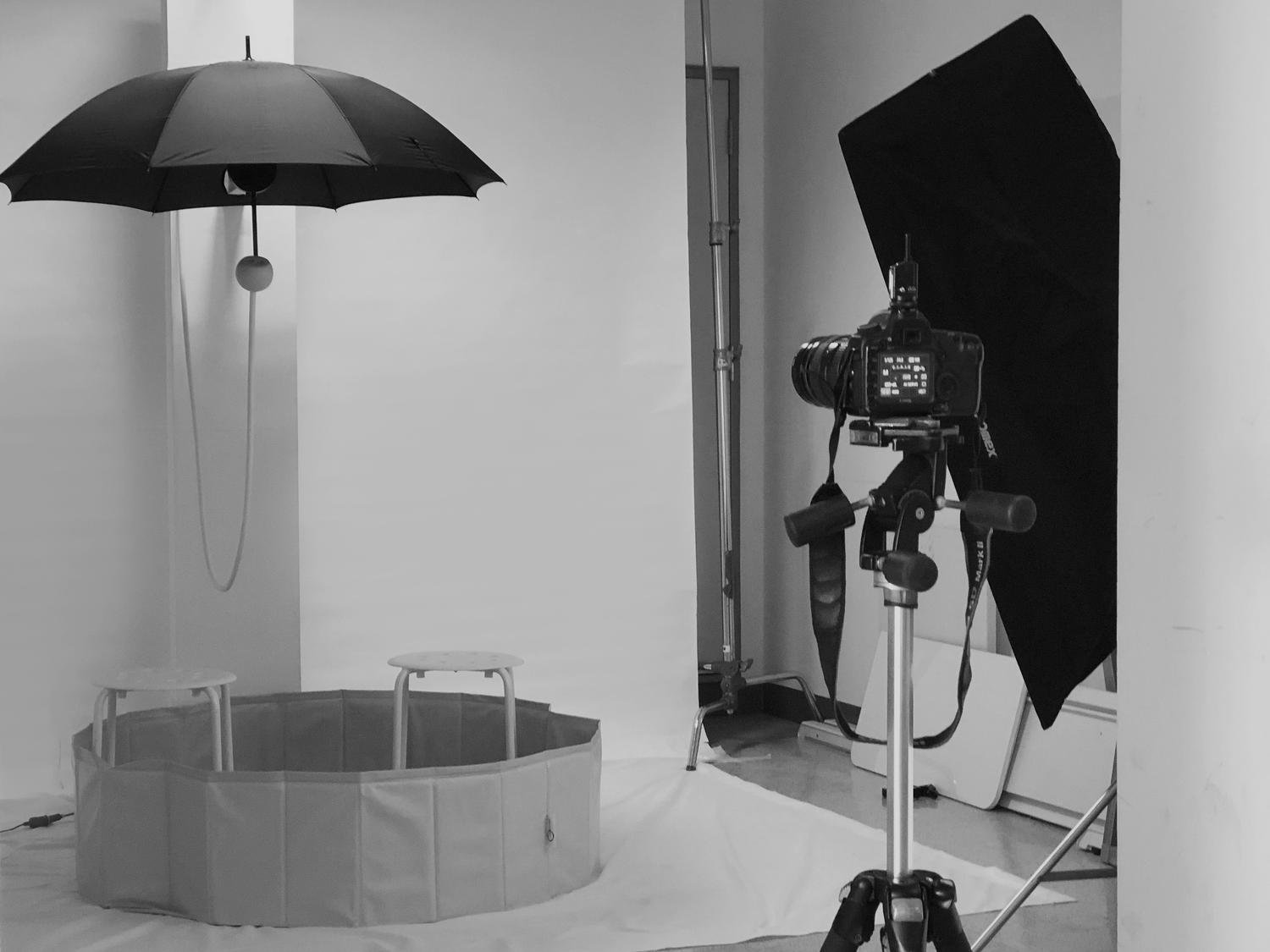Love Rain
Mechanism
How it works
Two people walk and sit on chairs under an umbrella.
Input 1
Ultrasonic distance sensor recognizes object (people).
Output 1
When distance sensor recognize two people, it starts to rain.
Recognize the object ⇀
Servo Motor No.1 for the on/off control of Rain Machine.
Remove the magnetized device and hold it together & Put your thumbs on and interlock fingers.
Input 2
The heartbeat sensors compare each user’s BPM.
Heartbeat Sensor No.1 ⇌ Heartbeat Sensor No.2 define which BPM is higher.
The umbrella is tilted against the person with a high heart rate,
and the rain servo motor moves in the opposite direction of the umbrella servo motor.
Output 2 : Umbrella tiits and the direction of waterdrop changes.
BPM result ⇀ Servo Motor No.2 for the umbrella &
Servo Motor No.3 for the direction of waterdrop
As a result, the person who have more feelings will get wet! ☂️
—
Just like you tilt your umbrella more to the person you like or care
and make your shoulders wet on rainy day.
Components
Designing Interface & Interaction
To recreate the umbrella handle, we discussed various possibilities based on human scale.
We imagined the shape of heartbeat sensor-attached handle device which controls the direction of the umbrella.But after trying to make some mock-ups, we decided to make design that is more easy to grap and draw participants closer and create intimate mood.
We also came up with different methods to make realistic rain scene. The device has to be tall enough to pour water above umbrella. Also we had to make at least one person’s shoulder wet. Most importantly, it had to be safe. Various ideations were processed so that people can experience the reality-similar rain experience.
Shape Study
At first we came up with the common shape of umbrella handle but with size big and long enough for two people to grab. But it ended up as a trial as the handle was too big and quite banal.
Interaction Principles
Affordance
The pool and the chairs naturally draw people inside and sit down
-> As a Feedback, Rain starts from the shower head.
Mapping & Signifier
Letters written down on the handle guide users what to do: put thumbs on the holes.
⇀ As a Feedback, BPMs are measured & Umbrella starts tilting.
Arduino Prototype
To make first working prototype, we used servo motors, pulse sensor and some 3D printed objects.
We tried to measure the heart rate, convert the value to BPM and make servo motors moves when BPM is up to 80.
Then, we succeeded in adjusting the tilt of the servo by connecting two heartbeat sensors.
Through the scale mock-up,
Controlled motor rotation based on heart rate values.
Tried various ways to make water fall above umbrella
Figured out the degree of motor rotation to make people’s shoulder wet.
Making the Raindrop
Ultrasonic distance sensor
Using a distance sensor, it allows people to enter the machine and create an environment where it rains. It rains when a person is detected within 20cm of the sensor. It is designed to operate by connecting distance sensor and servo motor that presses shower button.
Servo Motor No.1
on/off control of Rain Machine.
Whatever it is, the way you tell your story online can make all the difference.
Servo Motor No.1 connected w/ sensor
Ultrasonic distance sensor
If an object is detected within 20 cm, the servo motor is activated.
Servo Motor No.3
Water drop direction
The direction and range of rain were very important to wet the user's shoulders. Both left and right users had to have their outer shoulders wet, so the shower itself was turned to change the direction of the stream according to the heart rate sensor value. Through this, it is designed to shoot water accurately in the direction (shoulder side) that needs to be aimed.
Tilting the Umbrella with the Heart Rate Value
We needed a servo-motor that could withstand the weight of the umbrella, water and gravity. We found a servo motor that could support a load of 35kg and conducted various experiments on tilting the umbrella; such as wrapping fixed parts tightly using rubber bands and making sawtooth frames and moving them back and forth.
Servo Moter No.2 connected to sensor
Heartbeat Sensor No.1&2
Two heartbeat sensors each receive a value, and the servo motor moves toward the lower value. If the value of the left sensor is small, the expression turns left.
Even if the servo motor turns under weight, all parts must be safely connected and the correct movement should continue. So, we used iron hinges for the motor parts, manufactured products that would fit the iron hinges separately with 3D printing and attached to the umbrella to connect the servo motor and umbrella.
Umbrella Angle Aiming Experiment
To wet shoulders, the shower head had to rotate in opposite direction of the umbrella.
The degree of rotation had to be carefully calculated to allow water to fall accurately down to the shoulder.
Constructing ‘Love Rain’
We extended the square pillar to be in an adequate height for rain fall. Inside the extension, we hided components like arduino, water tank, shower pump.
To connect the heart sensor and umbrella, the wire was extended by soldering and then closed with a rubber hose. We colored the whole pillar white so that umbrella can look like it’s floating in the air.
Used Arduino
Each part for control is installed in an optimal position to be protected from water, yet hidden from the user’s view point. All parts are waterproofed by using waterproofing spray.
Installation
Experience
Students of IID experienced the actual working-device at Hongik University on June 11th.
Filming
Due to size limitations, we set up our own shooting booth in the school hallway and
videotaped the whole set-up in action. For small components like 3d printed mock-up, we used studio for detail photo cuts.
Period: 03.2021 - 06.2021
Project Type: Group of 3
Project Contribution: Idea building, Design, 3d modeling, Installation making, Arduino coding


























































